Monacor DIB-100 Handleiding
Monacor
Schakelaar
DIB-100
Bekijk gratis de handleiding van Monacor DIB-100 (4 pagina’s), behorend tot de categorie Schakelaar. Deze gids werd als nuttig beoordeeld door 42 mensen en kreeg gemiddeld 3.6 sterren uit 21.5 reviews. Heb je een vraag over Monacor DIB-100 of wil je andere gebruikers van dit product iets vragen? Stel een vraag
Pagina 1/4

ELECTRONICS FOR SPECIALISTS ELECTRONICS FOR SPECIALISTS ELECTRONICS FOR SPECIALISTS ELECTRONICS FOR SPECIALISTS ELECTRONICS FOR SPECIALISTS ELECTRONICS
DIB-100
Bestellnummer 24.1140
MONACOR INTERNATIONAL GmbH & Co. KG • Zum Falsch 36 • 28307 Bremen • Germany
Copyright© by MONACOR INTERNATIONAL. All rights reserved. A-0539.99.04.08.2016
1
MM X-122
CH1 C H2 CH3 C H4 CH5/6 CH7/8 CH9/10 CH11/12
5/6 7/ 8 9/10 11/1 2
L R
C
0 10
5
-15 +15
0
-15 +15
0
0 10
5
0 10
5
0 10
5
0 10
5
0 10
5
L R
C
0 10
5
-15 +15
0
-15 +15
0
0 10
5
0 10
5
L R
C
0 10
5
-15 +15
0
-15 +15
0
0 10
5
0 10
5
L R
C
0 10
5
-15 +15
0
-15 +15
0
0 10
5
0 10
5
L R
C
0 10
5
-15 +15
0
-15 +15
0
0 10
5
0 10
5
L R
C
0 10
5
-15 +15
0
-15 +15
0
0 10
5
0 10
5
L R
C
0 10
5
-15 +15
0
-15 +15
0
0 10
5
L R
C
0 10
5
-15 +15
0
-15 +15
0
0 10
5
+22
+10
+7
+4
+2
0
–2
–4
–7
–10
–20
–30
L R2 3 4
DIB -10 0
0dB –40–20
PAR. OUT
UNBAL . 50k Ω
INPUT ATT.
GROU ND LIFTOUT PUT
BAL. 600Ω OFF O N
PROFESSIONAL GU ITAR AMPLI FIER
GAIN 1
0 10
OVERDRIVE CH ANNEL
GAIN 2
INPUT
CONTOUR GAI N
SEL E CT
1
2
BASS
0 10
MIDDL E
0 10
TREB LE
0 10
LEVEL
0 10
LEVEL
0 10
BASS
0 10
MIDDL E
0 10
TREB LE
0 10
REV E RB
0 10
VOLUM E
0 10
MIN. 8 Ω
PHONESNORM AL CHANNEL
CHAN NEL
SEL E CT
MASTER
POW E R
0 10 0 10
DI-Box
Diese Bedienungsanleitung richtet sich an
Benutzer ohne besondere Fachkenntnisse.
Bitte lesen Sie die Anleitung vor dem Betrieb
gründlich durch und heben Sie sie für ein
späteres Nachlesen auf.
1 Übersicht der Bedienelemente
undAnschlüsse
2
3 4 5
1
DIB-100
0dB –40–20
PAR. OUT
UNBAL. 50 kΩ
INPUT ATT.
GROUND LIFTOUTPUT
BAL. 600Ω OFF ON
1 symmetrischer Ausgang (XLR)
2 Groundlift-Schalter zum Trennen der Massever-
bindung zwischen dem Eingang (3) und dem
Ausgang (1)
3 asymmetrischer Eingang (6,3-mm-Klinke)
4 asym. Durchschleifausgang (6,3-mm-Klinke):
hier kann das durchgeschleifte Eingangs signal
der Buchse (3) abgenommen werden
5 Schalter „ATT“
zum Abschwächen des Eingangs signals
2 Hinweise für den
sicherenGebrauch
Das Gerät entspricht allen relevanten Richt linien
der EU und trägt deshalb das -Zeichen.
•
Verwenden Sie das Gerät nur im Innenbereich.
Schützen Sie es vor Tropf- und Spritzwasser,
hoher Luftfeuchtigkeit und Hitze (zulässiger
Einsatztemperaturbereich 0 – 40 °C).
•
Verwenden Sie für die Reinigung nur ein trocke-
nes, weiches Tuch, auf keinen Fall Chemikalien
oder Wasser.
•
Wird das Gerät zweckentfremdet, nicht richtig
angeschlossen, falsch bedient oder nicht fach-
gerecht repariert, kann keine Garantie für das
Gerät und keine Haftung für daraus resultie-
rende Sach- oder Personenschäden übernom-
men werden.
Soll das Gerät endgültig aus dem Betrieb
genommen werden, übergeben Sie es
zur umweltgerechten Entsorgung einem
ört lichen Recyclingbetrieb.
3 Einsatzmöglichkeiten
Die DI-Box ( njection) DIB-100 dient zum D Iirect
optimalen Anschluss eines Musikinstruments
mit hochohmigem, asymmetrischen Ausgang an
einen niederohmigen, symmetrischen Eingang
eines Mischpults (siehe Abb. unten). Durch die
symmetrische Verbindung zum Mischpult lassen
sich auch bei langen Anschlussleitungen Störein-
strahlungen vermeiden.
Hohe Signalpegel können mit dem Abschwä-
cher reduziert und an den Mischpulteingang
angepasst werden. Dadurch lässt sich die DI-Box
auch direkt an den Lautsprecherausgang eines
Instrumentenverstärkers (z. B. Gitarrenverstärker)
anschließen. Die Klangbeeinflussung des Signals
durch den Verstärker bleibt somit erhalten.
4 Inbetriebnahme
Die DI-Box benötigt keine Stromversorgung.
4.1 Asymmetrischen Eingang anschließen
An die Eingangsbuchse „INPUT“ (3) den Ausgang
des Musikinstruments anschließen. Alternativ
kann die Eingangsbuchse auch mit dem Laut-
sprecherausgang eines Instrumentenverstärkers
verbunden werden.
Vorsicht! Lautsprecherausgänge von Verstär-
kern, die in Brückenschaltung arbeiten, nicht
anschließen, weil diese durch die DI-Box kurz-
geschlossen werden.
Steht der Schalter „ATT.“ (5) ganz links auf Posi-
tion „0 dB“, wird der Pegel das Eingangssignals
nicht abgeschwächt. Treten am nachfolgenden
Mischpult Verzerrungen auf, den Schalter in die
Position „20 dB“ oder, bei sehr hohen Signalen,
in die Position „40 dB“ stellen.
4.2 Symmetrischen Ausgang anschließen
Das symmetrische Ausgangssignal steht am XLR-
Ausgang (1) zur Verfügung. Den Ausgang über
ein symmetrisches Kabel an einen hochempfind-
lichen Eingang eines Mischpultes (z. B. Mikrofon-
eingang) anschließen.
4.3 Durchschleifausgang nutzen
Soll das Instrumentensignal auch gleichzeitig auf
einen Verstärker gegeben werden, den Verstärker-
eingang an die Buchse „PAR. OUT“ (4) anschlie-
ßen (siehe Abb. unten). Hier liegt direkt das vom
Instrument kommende Signal an.
Achtung! Der Durchschleifausgang ist nicht
zum Anschluss von Lautsprechern geeignet.
Überlastungsgefahr!
4.4 Groundlift-Schalter
Steht der Groundlift-Schalter (2) in der Position
„OFF“, ist die Masse des asymmetrischen Eingangs
(3) mit der Masse des symmetrischen Ausgangs
(1) verbunden. Diese Schalterstellung sollte zuerst
gewählt werden. Tritt jedoch eine Brummschleife
auf, den Schalter in die Position „ON“ stellen. Die
Masse zwischen dem Ein- und Ausgang ist dann
aufgetrennt (galvanische Trennung).
5 Technische Daten
Frequenzbereich: . . . . . 15 – 30 000 Hz, ±0 dB
Abschwächung des
Eingangsignals: . . . . . . . 0 dB, 20 dB, 40 dB
Eingang
1 × 6,3-mm-Klinke: . . 50 kΩ, asymmetrisch
Ausgänge
1 × 6,3-mm-Klinke: . . Durchschleifausgang, asym.
1 × XLR: . . . . . . . . . . . 600 Ω, symmetrisch
Übersetzungsverhältnis: 10 : 1
Einsatztemperatur: . . . . 0 – 40 °C
Abmessungen, Gewicht: 74 × 45 × 130 mm, 650 g
Deutsch
Musikinstrument DI-Box Mischpult Instrumentenverstärker
Änderungen vorbehalten.

ELECTRONICS FOR SPECIALISTS ELECTRONICS FOR SPECIALISTS ELECTRONICS FOR SPECIALISTS ELECTRONICS FOR SPECIALISTS ELECTRONICS FOR SPECIALISTS ELECTRONICS
MONACOR INTERNATIONAL GmbH & Co. KG • Zum Falsch 36 • 28307 Bremen • Germany
Copyright© by MONACOR INTERNATIONAL. All rights reserved. A-0539.99.04.08.2016
1
MM X-122
CH1 C H2 CH3 C H4 CH5/6 CH7/8 CH9/10 CH11/12
5/6 7/ 8 9/10 11/1 2
L R
C
0 10
5
-15 +15
0
-15 +15
0
0 10
5
0 10
5
0 10
5
0 10
5
0 10
5
L R
C
0 10
5
-15 +15
0
-15 +15
0
0 10
5
0 10
5
L R
C
0 10
5
-15 +15
0
-15 +15
0
0 10
5
0 10
5
L R
C
0 10
5
-15 +15
0
-15 +15
0
0 10
5
0 10
5
L R
C
0 10
5
-15 +15
0
-15 +15
0
0 10
5
0 10
5
L R
C
0 10
5
-15 +15
0
-15 +15
0
0 10
5
0 10
5
L R
C
0 10
5
-15 +15
0
-15 +15
0
0 10
5
L R
C
0 10
5
-15 +15
0
-15 +15
0
0 10
5
+22
+10
+7
+4
+2
0
–2
–4
–7
–10
–20
–30
L R2 3 4
DIB -10 0
0dB –40–20
PAR. OUT
UNBAL . 50k Ω
INPUT ATT.
GROU ND LIFTOUT PUT
BAL. 600Ω OFF O N
PROFESSIONAL GU ITAR AMPLI FIER
GAIN 1
0 10
OVERDRIVE CH ANNEL
GAIN 2
INPUT
CONTOUR GAI N
SEL E CT
1
2
BASS
0 10
MIDDL E
0 10
TREB LE
0 10
LEVEL
0 10
LEVEL
0 10
BASS
0 10
MIDDL E
0 10
TREB LE
0 10
REV E RB
0 10
VOLUM E
0 10
MIN. 8 Ω
PHONESNORM AL CHANNEL
CHAN NEL
SEL E CT
MASTER
POW E R
0 10 0 10
DIB-100
Order Number 24.1140
DI Box
These instructions are intended for users
without any specific technical knowledge.
Please read these instructions carefully prior
to operating the unit and keep them for later
reference.
1 Operating Elements
andConnections
2
3 4 5
1
DIB-100
0dB –40–20
PAR. OUT
UNBAL. 50 kΩ
INPUT ATT.
GROUND LIFTOUTPUT
BAL. 600Ω OFF ON
1 Balanced output (XLR)
2 Groundlift switch for separating the ground
connection between the input (3) and the out-
put (1)
3 Unbalanced input (6.3 mm jack)
4 Unbalanced feedthrough output (6.3 mm jack);
at this jack, the fed-through input signal of jack
(3) can be picked up
5 Switch “ATT” for attenuating the input signal
2 Safety Notes
The unit corresponds to all relevant directives of
the EU and is therefore marked with .
•
The unit is suitable for indoor use only. Protect
it against dripping water and splash water, high
air humidity and heat (admissible ambient tem-
perature range 0 – 40 °C).
•
For cleaning only use a dry, soft cloth. Do not
use any chemicals or water.
•
No guarantee claims for the unit and no liability
for any resulting personal damage or material
damage will be accepted if the unit is used for
other purposes than originally intended, if it is
not correctly connected, operated, or not re-
paired in an expert way.
If the unit is to be put out of operation
definitively, take it to a local recycling
plant for a disposal which is not harmful
to the environment.
3 Applications
The DI Box ( njection) DIB-100 has been D Iirect
designed for optimum connection of a musical
instrument with unbalanced, high-impedance
output to a balanced, low-impedance input of a
mixer (see fig. below). Due to the balanced con-
nection to the mixer, interferences can be pre-
vented even in case of long connection cables.
High signal levels can be reduced with the
attenuator and be matched to the mixer input.
Thus, the DI Box can also be directly connected
to the speaker output of an instrument amplifier
(e. g. guitar amplifier). Consequently, the effect
of the amplifier on the sound of the signal is
maintained.
4 Setting into Operation
The DI Box does not require a power supply.
4.1 Connecting the unbalanced input
Connect the output of the musical instrument to
the input jack “INPUT” (3). Alternatively, the input
jack can also be connected to the speaker output
of an instrument amplifier.
Caution! Never connect speaker outputs of
amplifiers operating in bridge circuit; the DI Box
will short-circuit them.
If the switch “ATT.” (5) is at the left stop at “0 dB”,
the level of the input signal is not attenuated. If
distortions occur on the following mixer, set the
switch to position “20 dB” or, in case of very high
signals, to position “40 dB”.
4.2 Connecting the balanced output
The balanced output signal is available at the XLR
output (1). Connect the output via a balanced
cable to a highly sensitive input of a mixer (e. g.
microphone input).
4.3 Using the feedthrough output
For feeding the instrument signal simultaneously
to an amplifier, connect the amplifier input to the
jack “PAR. OUT” (4) [see fig. below]. This is where
the signal coming from the instrument is directly
applied.
Attention! The feedthrough output is not suit-
able for connecting speakers. Risk of overload!
4.4 Groundlift switch
If the groundlift switch (2) is in “OFF” position, the
ground of the unbalanced input (3) is connected
to the ground of the balanced output (1). This
switch position should be chosen first. However,
in case of hum loops, set the switch to “ON” posi-
tion. Then the ground between input and output
is separated (galvanic separation).
5 Specifications
Frequency range: . . . . . 15 to 30 000 Hz, ±0 dB
Attenuation of
the input signal: . . . . . . 0 dB, 20 dB, 40 dB
Input
1 × 6.3 mm jack: . . . . 50 kΩ, unbalanced
Outputs
1 × 6.3 mm jack: . . . . feedthrough output,
unbalanced
1 × XLR: . . . . . . . . . . . 600 Ω, balanced
Transmission ratio: . . . . 10 : 1
Ambient temperature: . 0 – 40 °C
Dimensions: . . . . . . . . . 74 × 45 × 130 mm
Weight: . . . . . . . . . . . . 650 g
Subject to technical modification.
English
Musical instrument DI Box Mixer Instrument amplifier

ELECTRONICS FOR SPECIALISTS ELECTRONICS FOR SPECIALISTS ELECTRONICS FOR SPECIALISTS ELECTRONICS FOR SPECIALISTS ELECTRONICS FOR SPECIALISTS ELECTRONICS
MONACOR INTERNATIONAL GmbH & Co. KG • Zum Falsch 36 • 28307 Bremen • Germany
Copyright© by MONACOR INTERNATIONAL. All rights reserved. A-0539.99.04.08.2016
1
MM X-122
CH1 C H2 CH3 C H4 CH5/6 CH7/8 CH9/10 CH11/12
5/6 7/ 8 9/10 11/1 2
L R
C
0 10
5
-15 +15
0
-15 +15
0
0 10
5
0 10
5
0 10
5
0 10
5
0 10
5
L R
C
0 10
5
-15 +15
0
-15 +15
0
0 10
5
0 10
5
L R
C
0 10
5
-15 +15
0
-15 +15
0
0 10
5
0 10
5
L R
C
0 10
5
-15 +15
0
-15 +15
0
0 10
5
0 10
5
L R
C
0 10
5
-15 +15
0
-15 +15
0
0 10
5
0 10
5
L R
C
0 10
5
-15 +15
0
-15 +15
0
0 10
5
0 10
5
L R
C
0 10
5
-15 +15
0
-15 +15
0
0 10
5
L R
C
0 10
5
-15 +15
0
-15 +15
0
0 10
5
+22
+10
+7
+4
+2
0
–2
–4
–7
–10
–20
–30
L R2 3 4
DIB -10 0
0dB –40–20
PAR. OUT
UNBAL . 50k Ω
INPUT ATT.
GROU ND LIFTOUT PUT
BAL. 600Ω OFF O N
PROFESSIONAL GU ITAR AMPLI FIER
GAIN 1
0 10
OVERDRIVE CH ANNEL
GAIN 2
INPUT
CONTOUR GAI N
SEL E CT
1
2
BASS
0 10
MIDDL E
0 10
TREB LE
0 10
LEVEL
0 10
LEVEL
0 10
BASS
0 10
MIDDL E
0 10
TREB LE
0 10
REV E RB
0 10
VOLUM E
0 10
MIN. 8 Ω
PHONESNORM AL CHANNEL
CHAN NEL
SEL E CT
MASTER
POW E R
0 10 0 10
DIB-100
Référence numerique 24.1140
Boîtier d’injection directe
Cette notice s‘adresse aux utilisateurs sans
connaissances techniques particulières. Veuil-
lez lire la présente notice avant le fonction-
nement et conservez-la pour pouvoir vous y
reporter ultérieurement.
1 Eléments et branchements
2
3 4 5
1
DIB-100
0dB –40–20
PAR. OUT
UNBAL. 50 kΩ
INPUT ATT.
GROUND LIFTOUTPUT
BAL. 600Ω OFF ON
1 Sortie symétrique (XLR)
2 Interrupteur Groundlift
pour séparer la connexion masse entre l’en-
trée(3) et la sortie (1)
3 Entrée asymétrique (jack 6,35)
4 Sortie asymétrique pour repiquage (jack 6,35):
il est possible de prendre ici le signal d’entrée
de la prise (3)
5 Interrupteur «ATT»
pour l’atténuation du signal d’entrée
2 Conseils d’utilisation
etdesécurité
Cet appareil répond à toutes les directives nécessaires
de l’Union européenne et porte donc le symbole .
•
Cet appareil n’est conçu que pour une utilisation
en intérieur. Protégez-le de tout type de projec-
tions d’eau, des éclaboussures, d’une humidité
d’air élevée et de la chaleur (plage de tempé-
rature de fonctionnement autorisée : 0 – 40 °C).
•
Pour le nettoyer, utilisez un chiffon sec et doux,
en aucun cas de produits chimiques ou d’eau.
•
Nous déclinons toute responsabilité en cas de
dommages matériels ou corporels consécutifs si
l’appareil est utilisé dans un but autre que celui
pour lequel il a été conçu, s’il n’est pas correc-
tement branché, utilisé ou n’est pas réparé par
une personne habilitée ; de même, la garantie
deviendrait caduque.
Lorsque l’appareil est définitivement retiré
du service, vous devez le déposer dans une
usine de recyclage adaptée pour contri-
buer à son élimination non polluante.
CARTONS ET EMBALLAGE
PAPIER À TRIER
3 Possibilités d’utilisation
Le boîtier d’injection directe DIB-100, DI-Box
(D Iirect njection), permet de brancher de ma-
nière optimale un instrument de musique avec
une sortie haute impédance, asymétrique, à une
entrée basse impédance, symétrique, d’une table
de mixage (voir schéma ci-dessous). La connexion
symétrique à la table permet d’éviter des interfé-
rences en cas de longs branchements.
Les niveaux élevés de signaux peuvent être ré-
duits avec l’atténuateur et adaptés à l’entrée de la
table de mixage. Il est ainsi possible de connecter
directement le boîtier à la sortie haut-parleur d’un
amplificateur d’instrument (p. ex. amplificateur de
guitare). L’impact de l’amplificateur sur la tonalité
du signal reste ainsi maintenue.
4 Fonctionnement
Le boîtier d’injection directe ne nécessite aucune
alimentation.
4.1 Branchement de l’entrée asymétrique
Reliez la sortie de l’instrument de musique à la
prise d’entrée «INPUT» (3). Alternativement, la
prise d’entrée peut également être reliée à la sortie
haut-parleur d’un amplificateur d’instrument.
Attention ! Ne branchez jamais les sorties
haut-parleur des amplificateurs qui fonctionnent
en mode bridgé car elles sont court-circuitées
par le boîtier d’injection directe.
Si l’interrupteur «ATT.» (5) est entièrement à
gauche sur la position «0 dB», le niveau du si-
gnal d’entrée n’est pas diminué. Si sur la table de
mixage reliée, des distorsions apparaissent, met-
tez l’interrupteur sur la position «20 dB» ou, pour
des signaux très élevés, sur la position «40 dB».
4.2 Branchement d’une sortie symétrique
Le signal de sortie symétrique est disponible à
la sortie XLR (1). Reliez la sortie via un cordon
symétrique à une entrée à grande sensibilité d’une
table de mixage (p. ex. entrée micro).
4.3 Utilisation de la sortie pour repiquage
Si le signal d’un instrument doit être distribué
simultanément à un amplificateur, reliez l’en-
trée amplificateur à la prise «PAR. OUT» (4) [voir
schéma ci-dessous] ; le signal venant de l’instru-
ment y est directement appliqué.
Attention ! La sortie pour repiquage n’est
pas adaptée pour brancher des haut-parleurs.
Risque de surcharge !
4.4 Interrupteur Groundlift
Si l’interrupteur Groundlift (2) est sur la position
«OFF», la masse de l’entrée asymétrique (3) est
reliée à la masse de la sortie symétrique (1). Sé-
lectionnez tout d’abord cette position. En cas de
ronflement, mettez l’interrupteur sur la position
«ON». La masse entre l’entrée et la sortie est sé-
parée (séparation galvanique).
5 Caractéristiques techniques
Bande passante : . . . . . . . 15 – 30 000 Hz, ±0 dB
Atténuation du
signal d’entrée : . . . . . . . 0 dB, 20 dB, 40 dB
Entrée
1 × jack 6,35 : . . . . . . . 50 kΩ, asymétrique
Sorties
1 × jack 6,35 : . . . . . . . sortie pour repiquage,
asymétrique
1 × XLR : . . . . . . . . . . . 600 Ω, symétrique
Rapport de transmission : 10 : 1
Température de fonc. : . . 0 – 40 °C
Dimensions, poids : . . . . .74 × 45 × 130 mm,
650 g
Français
instrument de musique DI-Box table de mixage amplificateur d’instrument
Tout droit de modification réservé.
Product specificaties
| Merk: | Monacor |
| Categorie: | Schakelaar |
| Model: | DIB-100 |
| Kleur van het product: | Zwart |
| Gewicht: | 560 g |
| Breedte: | 74 mm |
| Diepte: | 130 mm |
| Hoogte: | 45 mm |
| Audio-uitgangskanalen: | 2 kanalen |
| Audio invoer kanalen: | 1 |
Heb je hulp nodig?
Als je hulp nodig hebt met Monacor DIB-100 stel dan hieronder een vraag en andere gebruikers zullen je antwoorden
Handleiding Schakelaar Monacor

19 Juni 2023

18 Juni 2023

16 Juni 2023

12 Juni 2023

9 Juni 2023

8 Juni 2023

7 Juni 2023

28 Mei 2023

27 Mei 2023

25 Mei 2023
Handleiding Schakelaar
- Chacon
- Chamberlain
- Kopp
- Ansmann
- QNAP
- INOGENI
- Shimano
- RGBlink
- PCE
- EBERLE
- Cudy
- H-Tronic
- Vivanco
- Leviton
- Eltako
Nieuwste handleidingen voor Schakelaar
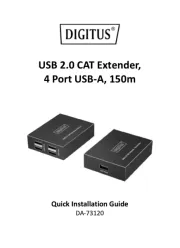
30 Juli 2025
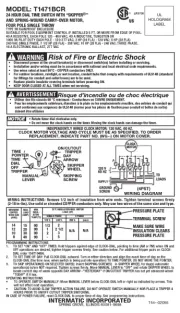
30 Juli 2025
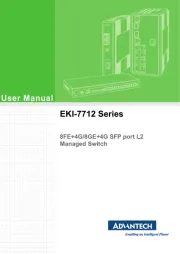
30 Juli 2025
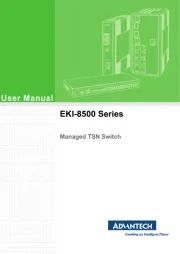
30 Juli 2025
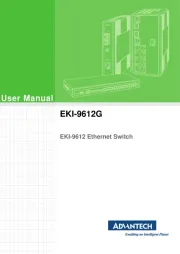
29 Juli 2025
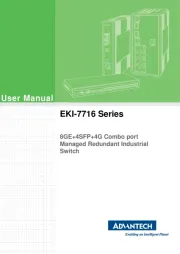
29 Juli 2025
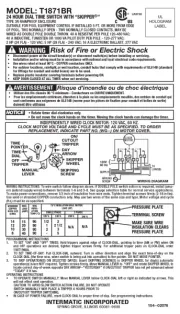
29 Juli 2025
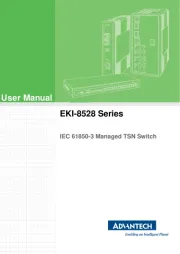
29 Juli 2025
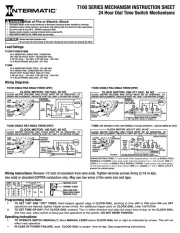
29 Juli 2025
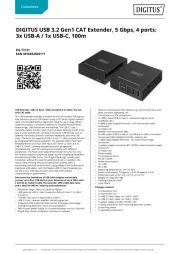
29 Juli 2025